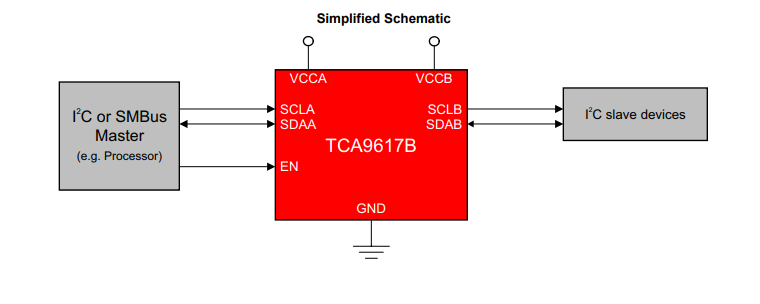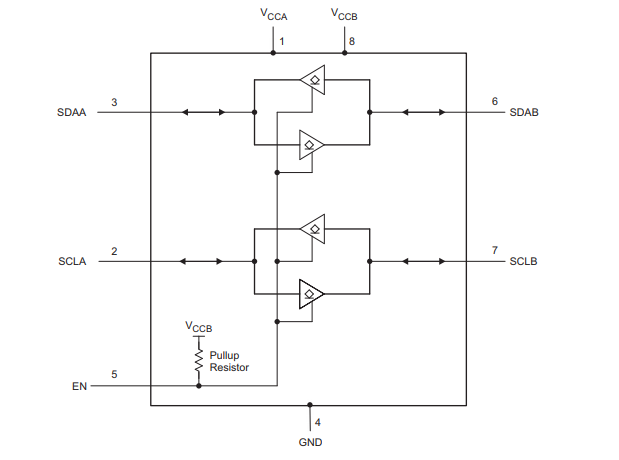Other Parts Discussed in Thread: TCA9517,
We may have found an error with the part TCA9617BDGKR in our schematics that results from your datasheet. http://www.ti.com/lit/ds/symlink/tca9617b.pdf
The EN-pin is placed on the VCCA-side or I2C-master side in the first figure of the datasheet.
Later in the datasheet we can find this figure:
Here we can see that EN is not tied to VCCA but VCCB.
So here are my questions:
So does anything bad happens to the part and is it functioning to its specified behavior if I have the EN-pin tied to +3.3V (VCCA) and VCCB is +5V?
Why is the EN pin internally tied to VCCB when it makes more sense to be triggered by the master (VCCA-side) and not the slave (VCCB-side)?



